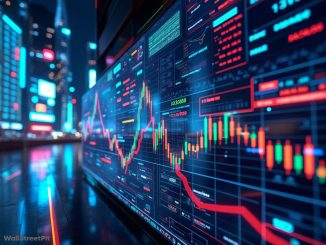As I feared, the economy has stalled.
Friday’s jobs report for April was even more disappointing than March. Employers added only 115,000 new jobs, down from March’s number (the Bureau of Labor Statistics revised the March number upward to 154,000, but it’s still abysmal relative to what’s needed). At least 125,000 new jobs are necessary each month just to keep up with an expanding population of working-age people.
That means the hole is getting even deeper.
Most observers pay attention to the official rate of unemployment, which edged down to 8.1 percent in April from 8.2 percent in March. That may sound like progress, but it’s not. The unemployment rate dropped because more people dropped out of the labor force, too discouraged to look for work. The household survey, from which the rate is calculated, counts as “unemployed” only people who are actively looking for work. If you stop looking because the job scene looks hopeless for you, you’re no longer counted.
In the winter months — December, January, and February – hiring had seemed to pick up, averaging over 250,000 new jobs per month. Then the mini-surge stopped. The simplest explanation is that the mild winter across much of the United States gave an unusual boost to hiring then, leading to a correction by the spring.
Most of the job gains in April were in lower-wage industries – retail stores, restaurants, and temporary-help. That means average wages continue to drop, adjusted for inflation – continuing their long-term decline. Most of the new jobs that have been added to the U.S. economy during this recovery have paid less than the jobs that were lost during the downturn.
What does all this mean? Together with other recent data showing slower economic growth during the first quarter of this year, it’s safe to say the economy has stalled.
This is bad news for millions of Americans, and it’s bad news for Obama and the Democrats. Voters don’t pay much attention to the economy in an election year until after Labor Day, so it’s not necessarily a huge help to Romney and the Republicans.
But it’s a bad political omen nonetheless. That’s because no set of policies between now and Election Day are likely to boost the economy. To the contrary, government at all levels continues to contract, acting as a fiscal drag when government needs to be doing the exact reverse – boosting the economy through additional spending.
Widening inequality is the underlying culprit here. As long as almost all the gains from economic growth continue to go to the top, the vast middle class doesn’t have the purchasing power to boost the economy on its own. And rich Americans spend a much smaller portion of their incomes than does the vast middle class. Their marginal satisfaction from additional spending falls off. The second yacht isn’t nearly as much fun as the first.
Get it? We’ve still got a terrible cyclical problem – we can’t get out of the gravitational pull of the Great Recession.
But the underlying problem is structural, and it’s been growing for decades. The structural problem of stagnant or declining real incomes for most people, and soaring income and wealth at the top, was masked during the boom years when the middle class could turn their homes into piggy banks and extract home-equity loans or refinance. But the mask came off in 2008 as home values plummeted.
There’s no way to put the mask back on. We’ve got to face the truth.
- Bulenox: Get 45% to 91% OFF ... Use Discount Code: UNO
- Risk Our Money Not Yours | Get 50% to 90% OFF ... Use Discount Code: MMBVBKSM
Disclaimer: This page contains affiliate links. If you choose to make a purchase after clicking a link, we may receive a commission at no additional cost to you. Thank you for your support!




Leave a Reply